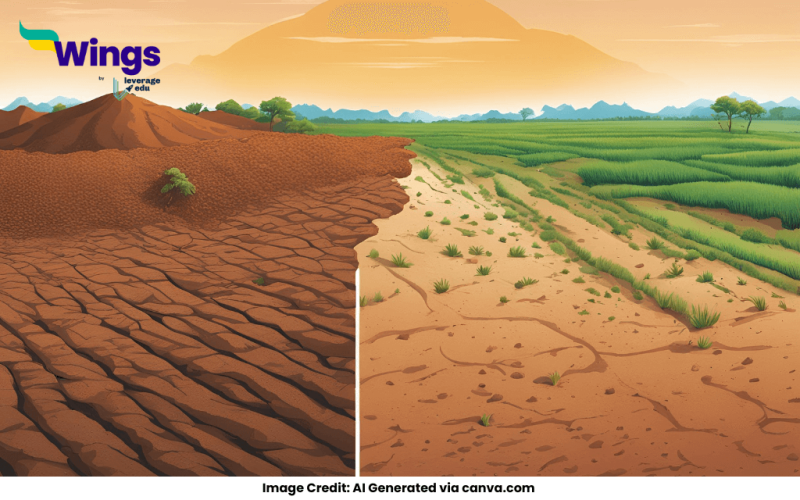To understand the difference between Khadar and Bhangar, you must first know that India has eight major types of soils – Alluvial soil, Black soil, Red soil, Laterite soil, Arid or Desert soil, Forest soil, Mountainous soil, and Marsh soil.
Alluvial soil is the soil deposited by rivers in floodplains and it is further classified into two parts:
- Khadar (Young Alluviam)
- Bhangar (Old Alluviam)
Both Khadar and Bhangar soil are commonly found in the northern plains and are important for agriculture in India.
Let’s explore their differences as per the NCERT Geography curriculum.
Khadar Soil
Meaning: Khadar refers to the new, younger alluvial soil deposited by rivers during annual floods.
Location: Found in the floodplains, close to riverbanks.
Fertility: Highly fertile as it is regularly replenished by fresh deposits of silt.
Texture: Fine, soft, and clayey, making it suitable for crops like wheat, rice, and sugarcane.
Example Areas: Found along the Ganga, Yamuna, and Brahmaputra rivers.
Bhangar
Meaning: Bhangar is the older alluvial soil that has been deposited over thousands of years.
Location: Found in higher upland areas, away from rivers.
Fertility: Less fertile compared to Khadar because it is not replenished by floods.
Texture: Coarse and stony, often containing calcium nodules called kankar.
Example Areas: Found in upland regions of the Ganga-Yamuna doab.
Key Differences at a Glance
| Aspect | Khadar | Bhangar |
| Age | New alluvial soil | Old alluvial soil |
| Location | Closer to rivers | Higher areas, away from rivers |
| Fertility | More fertile | Less fertile |
| Texture | Fine and soft | Coarse, with kankar nodules |
Fun Tip to Remember
Think of Khadar as a fresh notebook you buy every year for a new school term. It’s clean and ready for use.
In contrast, Bhangar is like an old, used notebook that’s been lying around for years. It’s still useful, but not as good as a fresh one!
 60,000+ students trusted us with their dreams. Take the first step today!
60,000+ students trusted us with their dreams. Take the first step today!


 One app for all your study abroad needs
One app for all your study abroad needs










